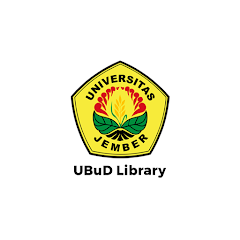

Clustering-based Optimized HEED protocols for WSNs using bacterial foraging optimization and fuzzy logic system
Prateek Gupta 1 - Personal Name
Ajay K. Sharma 2 - Personal Name

Proficient clustering method has a vital role in organizing sensor nodes in wireless sensor networks (WSNs), utilizing their energy resources efficiently and
providing longevity to network. Hybrid energy-efficient distributed (HEED) protocol is one of the prominent clus- tering protocol in WSNs. However, it has few shortcomings,i.e., cluster heads (CHs) variation in consecutive rounds, more work load on CHs, uneven energy dissipation by sensor nodes, and formation of hot spots in network. By resolving these issues, one can enhance HEED capabilities to a greater extent. We have designed variants of Opti-
mized HEED (OHEED) protocols named as HEED-1 Tier chaining (HEED1TC), HEED-2 Tier chaining (HEED2TC), ICHB-based OHEED-1 Tier chaining (ICOH1TC), ICHB-based OHEED-2 Tier chaining (ICOH2TC), ICHB-FL-based OHEED-1 Tier chaining (ICFLOH1TC), and ICHB-FL-based OHEED-2 Tier chaining (ICFLOH2TC) protocols. In HEED1TC and HEED2TC protocols, we have used chain-based intra-cluster and inter-cluster communication in
HEED, respectively, for even load balancing among sensor nodes and to avoid more work load on CHs. Furthermore, for appropriate cluster formation, minimizing CHs variation in consecutive rounds and reducing complex uncertainties, we have used bacterial foraging optimization algorithm (BFOA)-inspired proposed intelligent CH selection based on BFOA (ICHB) algorithm for CH selection in ICOH1TC and ICOH2TC protocols. Likewise, in ICFLOH1TC and
ICFLOH2TC protocols, we have used novel fuzzy set of rules additionally for CH selection to resolve the hot spots problem, proper CH selection covering whole network, and maximizing the network lifetime to a great extent. The sim-ulation results showed that proposed OHEED protocols are
able to handle above-discussed issues and provided far better results in comparison to HEED.
providing longevity to network. Hybrid energy-efficient distributed (HEED) protocol is one of the prominent clus- tering protocol in WSNs. However, it has few shortcomings,i.e., cluster heads (CHs) variation in consecutive rounds, more work load on CHs, uneven energy dissipation by sensor nodes, and formation of hot spots in network. By resolving these issues, one can enhance HEED capabilities to a greater extent. We have designed variants of Opti-
mized HEED (OHEED) protocols named as HEED-1 Tier chaining (HEED1TC), HEED-2 Tier chaining (HEED2TC), ICHB-based OHEED-1 Tier chaining (ICOH1TC), ICHB-based OHEED-2 Tier chaining (ICOH2TC), ICHB-FL-based OHEED-1 Tier chaining (ICFLOH1TC), and ICHB-FL-based OHEED-2 Tier chaining (ICFLOH2TC) protocols. In HEED1TC and HEED2TC protocols, we have used chain-based intra-cluster and inter-cluster communication in
HEED, respectively, for even load balancing among sensor nodes and to avoid more work load on CHs. Furthermore, for appropriate cluster formation, minimizing CHs variation in consecutive rounds and reducing complex uncertainties, we have used bacterial foraging optimization algorithm (BFOA)-inspired proposed intelligent CH selection based on BFOA (ICHB) algorithm for CH selection in ICOH1TC and ICOH2TC protocols. Likewise, in ICFLOH1TC and
ICFLOH2TC protocols, we have used novel fuzzy set of rules additionally for CH selection to resolve the hot spots problem, proper CH selection covering whole network, and maximizing the network lifetime to a great extent. The sim-ulation results showed that proposed OHEED protocols are
able to handle above-discussed issues and provided far better results in comparison to HEED.
Availability
| EB00000002699K | Available |
Detail Information
Series Title
-
Call Number
-
Publisher
: ,
Collation
-
Language
ISBN/ISSN
-
Classification
NONE
Detail Information
Content Type
E-Jurnal
Media Type
-
Carrier Type
-
Edition
-
Subject(s)
Clustering
Wireless sensor networks
Load balancing
HEED
Bacterial foraging optimization algorithm
Fuzzy logic system
Network lifetime
Specific Detail Info
-
Statement of Responsibility
-
No other version available
File Attachment









